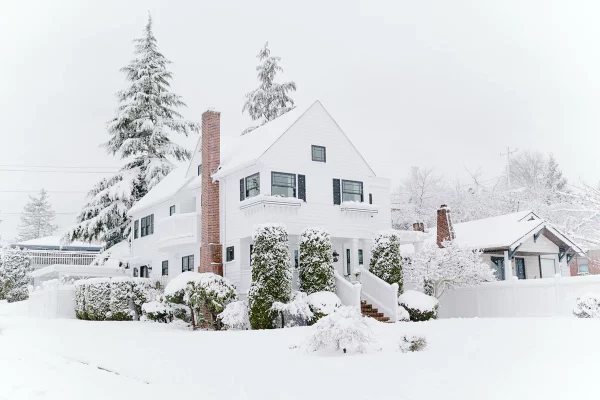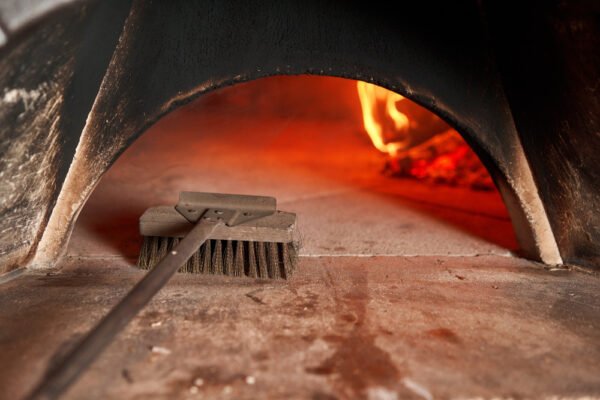
6 Building Problems that are Common During the Winter Months

Winter is here, and if you’re a property owner you will know that our homes are most prone to problems during the colder months. The harsh winter weather conditions such as heavy rain, snow and ice, not to mention the long, dark nights, can all create conditions that play havoc with your home, both inside and out.
A recent survey commissioned by Heating Force and Online Mortgage Advisor used Google Trends data from September 2020 to March 2021 to identify the most common issues experienced by households. And, while some are relatively minor and can easily be fixed or prevented from occurring altogether, others can lead to more serious problems that can be costly to remedy. Below is a useful summary of the most common building issues you should look out for in the wintertime.
1. Peeling paintwork
According to the survey results, peeling paint is the most common winter problem for property interiors, having experienced a monthly Google search increase of a staggering 675% last autumn and winter. Of course, peeling paintwork is unsightly, but while cracked or peeling paint can occur as a result of a lack of proper surface preparation, it could also be the first sign of damp entering your home.
Damp spots can leave unflattering stains on interior walls, but adequate ventilation and proper insulation should help to prevent paint from peeling. Applying specialist anti-damp paint is a good idea for areas of high condensation such as kitchens and bathrooms – here’s a useful guide to anti-condensation paints – though simply painting over the problem is often a false economy and no more than a short-term solution. Be aware that condensation favours the formation of mould and mildew, as we explain in more detail below.
2. Mould and mildew
The cold, damp British winter climate creates the ideal conditions for mould and mildew growth. According to the survey results, this is a problem for 56% of homes. A lack of ventilation makes properties a breeding ground for mould as walls become moist with condensation. Mould growth in the home is not only unsightly, it can be a health hazard too, which is why moisture should be controlled by a good flow of air circulation through the home. Make sure you open a window as a matter of course when cooking, washing up, doing the laundry or taking a bath / shower.
If black mould is visible, you can simply scrub it off with warm soapy water – however, unless you also identify the underlying source of damp, it will keep coming back. This is where a surveyor’s report can come in useful. Property surveyors don’t just compile homebuyer reports, they also produce specific defect surveys and damp reports that will identify the root cause of the problem and give you valuable advice on the best steps to take to rectify the issue. If your home is suffering from damp, it’s money well spent.
3. Draughty homes
Lack of proper insulation in the home can have another unwelcome consequence that is most severely felt during the colder months. Are you feeling draughts coming through badly fitting windows and doors? Perhaps you have inherited original sash windows that have seen better days? Or are door seals not doing their job, letting in the cold winter air? Did you know that in an uninsulated home, a quarter of heat is lost through the roof?
Energy efficiency is a topic close to everyone’s heart in these times of climate change. But closer to home, it also has a direct effect on your wallet. Loft insulation, cavity wall insulation, thermally efficient windows and doors, even simple DIY draught proofing techniques – these can all help make your home cosier to live in all year round, and reduce your utility bills as well.
4. Gutter problems
The job of gutters and downpipes (aka rainwater controls), is to safely direct rainwater away from the building. According to our above mentioned survey, there has been a 243% increase in Google searches for gutter problems. Certainly, the combination of heavy downpours and freezing temperatures during autumn and winter can expose any gutter weakness and exacerbate existing problems, however minor. It’s also advised to inspect your roof and you see significant damages, you may contact a roofer to determine if you need a roof replacement.
Regular gutter maintenance should be part of any responsible homeowner’s property maintenance schedule. Whether you do the job yourself or employ a contractor, make sure that you carry out twice-yearly checks as a minimum – once in the autumn and once after spring.
Gutters and downpipes should be checked for blockages to ensure water can fall freely without overflowing. Also, inspect gutter brackets and joints in case anything has come loose or become damaged. Gutter failure can lead to water damage to roofs and external walls, with the risk of damp to the building over time. If flooding is an issue, then urgent flood extraction should be prioritized.
5. Boiler breakdowns
Monthly Google searches for boiler breakdowns were up by 489% according to the survey results. Just as fridges always seem to go wrong in the height of summer, you can bet that if your central heating boiler is going to let you down, it will be during the coldest part of the year!
Boiler breakdowns usually happen as a result of lack of pressure in the appliance, faulty pipes or a worn ignition burner. You may notice a water leak, a loud bang or your heating and/or hot water not coming on. Be advised that fixing a broken boiler is definitely not a DIY job. Troubleshooting should be carried out by a qualified heating contractor who will know what to do to get your boiler up and running again.
6. Burst pipes
Unfortunately, winter is the season for burst pipes. Water expands when it freezes, which puts your pipes under pressure when the mercury drops dramatically. Too much pressure and the pipework will give way. When the water thaws, the burst pipe can cause significant water damage in your home. You may need to call an emergency plumber. In order to prevent your pipes from bursting, you need to reduce their exposure to the elements. Protect them from the cold with thermal pipe lagging, seal any draughts around the pipework, and fix any dripping taps. Make sure your heating comes on regularly, and switch it to holiday mode if you go away, rather than turning the boiler off completely















































